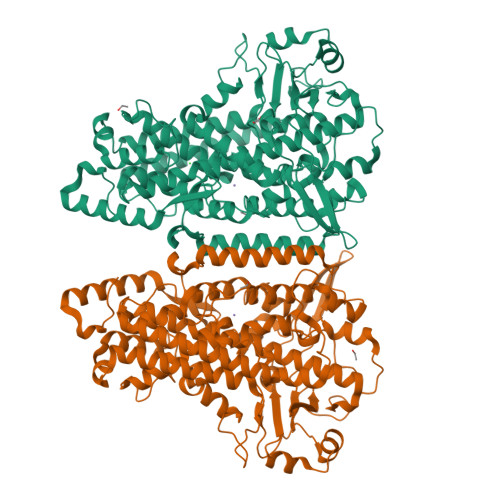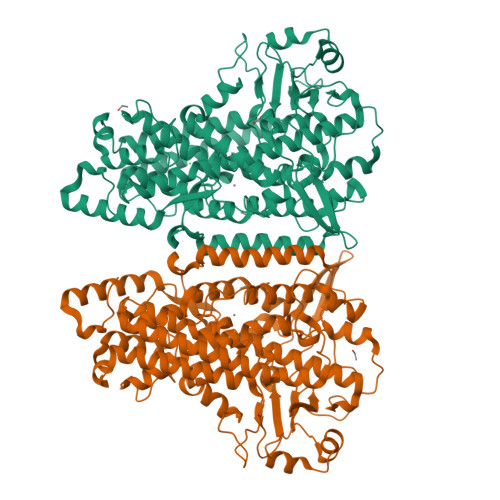Lipoxygenase 2 from Cyanothece sp. controls dioxygen insertion by steric shielding and substrate fixation.
Newie, J., Neumann, P., Werner, M., Mata, R.A., Ficner, R., Feussner, I.(2017) Sci Rep 7: 2069-2069
- PubMed: 28522865
- DOI: https://doi.org/10.1038/s41598-017-02153-w
- Primary Citation of Related Structures:
5MED, 5MEE, 5MEF, 5MEG - PubMed Abstract:
The biological function of lipoxygenases depends on the regio and stereo specific formation of fatty acid-derived hydroperoxides and different concepts exist to explain the mechanism that directs dioxygen to a specific carbon atom within the substrate. Here, we report the 1.8 Å resolution crystal structure of a cyanobacterial lipoxygenase that produces bis-allylic hydroperoxides (CspLOX2). Site directed mutagenesis experiments combined with computational approaches reveal that residues around the active site direct dioxygen to a preferred carbon atom and stereo configuration in the substrate fatty acid. Modulating the cavity volume around the pentadiene system of linoleic acid shifted the product formation towards 9S-, 9R-, 13S- or 13R-hydroperoxides in correlation with the site of mutation, thus decreasing the amount of the bis-allylic 11R-hydroperoxide. Decreasing the channel size of a 9R-lipoxygenase (CspLOX1) on the other hand could in turn induce formation of the bis-allylic 11R-hydroperoxide. Together this study suggests that an active site clamp fixing the pentadiene system of the substrate together with steric shielding controls the stereo and regio specific positioning of dioxygen at all positions of the reacting pentadiene system of substrate fatty acids.
Organizational Affiliation:
University of Goettingen, Albrecht-von-Haller Institute for Plant Sciences, Department of Plant Biochemistry, Justus-von-Liebig-Weg 11, 37077, Goettingen, Germany.





















